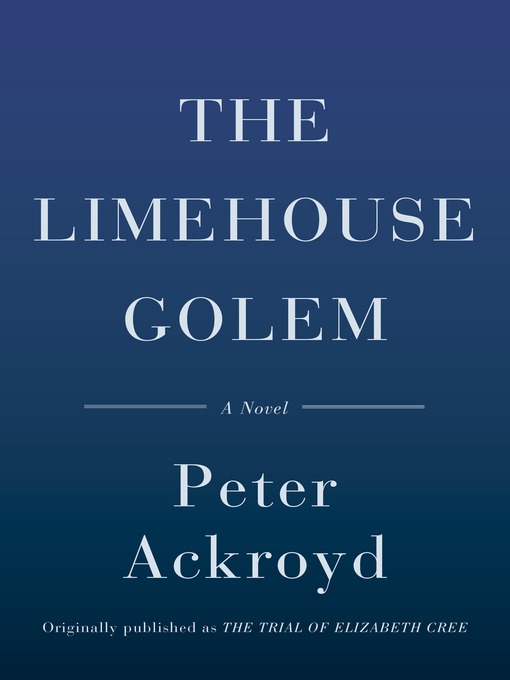Now a major motion picture
A literary star returns with an addictive tale of murder in Victorian London. Peter Ackroyd is "our most exciting and original writer... one of the few English writers of his generation who will be read in a hundred years' time." — The Sunday Times (London)
Without a doubt, Peter Ackroyd's breakout book. It has all the erudition and literary brilliance we expect of Ackroyd, yet it is as vivid, scary, and spellbinding as the best of Edgar Allan Poe. The year is 1880, the setting London's poor and dangerous Limehouse district, home to immigrants and criminals. A series of brutal murders has occurred, and, as Ackroyd leads us down London's dark streets, the sense of time and place becomes overwhelmingly immediate and real. We experience the sights and sounds of the English music halls, smell the smells of London slums, hear the hooves of horses on the cobblestone streets, and attend the trial of Elizabeth Cree, a woman accused of poisoning her husband but who may be the one person who knows the truth about the murders. The wonderfully rhythmic shifting of focus from trial to back alleys, where we come upon George Gissing, author of New Grub Street, and even Karl Marx, gives the story a tremendous depth and resonance beyond its page-turning thriller plot. Peter Ackroyd has once again confirmed his place as one of the great writers of our time.
Previously published as The Trial Of Elizabeth Cree.
- Available now
- New E-book Additions
- New kids and teen additions
- Most popular
- Best of the Library Writers Project
- Black Pacific Northwest Collection
- Manga from VIZ Media
- Ukrainian e-books
- See all ebooks collections
- New Audiobook Additions
- Most popular
- Available now
- New kids and teen additions
- LGBTQ Young Adult Audiobooks
- Family-Friendly Audiobooks 🎧
- Always Available Audiobooks
- Audiobooks Read by Celebrities
- See all audiobooks collections



